How has it been three months already? Yep, the time has come for me to say goodbye to the 2023 Volvo C40 Recharge Twin Motor. I'll miss it, to say the least.
In the first two instalments of this long-term UrbanGuide review, I covered off the all-electric small SUV's pricing, features, aftersales support, design and practicality in detail, so be sure to click on the related links below if you want to read more about those particular details.
But as promised, in this third and final 'ownership' update, I'm going to deep-dive just how well the C40 Recharge Twin Motor drives and deliver my final overall verdict on it. Let's get cracking!
Firstly, let's address the proverbial elephant in the room: the C40 Recharge Twin Motor's zero-emissions powertrain. As previously mentioned, it splits two electric motors between its front and rear axles to deliver all-wheel drive, with their combined outputs totalling 300kW of power and an even more formidable 660Nm of torque.
As you can imagine, with that level of grunt on offer, the C40 Recharge Twin Motor can well and truly get a wriggle on when your foot is flat to the floor. In fact, it can sprint from a standstill to 100km/h in a claimed 4.7 seconds, which is particularly impressive given it weighs about 2.2 tonnes. That said, it feels even quicker in reality.
As is always the case with battery-electric vehicles, the instantaneous torque on offer helps the C40 Recharge Twin Motor to scurry off the line with intent, so much so that it's capable of pinning occupants into their seat backrests. Again, not unusual, but the level of performance that's achievable here is hard to ignore. Make no mistake, from that point of view, this is a modern-day sports car – well, kind of.
.jpg)
But that's not to say that you can't drive the C40 Recharge Twin Motor around town calmly, as it's actually quite a bit Jekyll and Hyde in nature, in the sense that it's also capable of being very docile if your throttle inputs are more measured. And it's that bandwidth that makes it so endearing to me personally in the first place. It can be 'on', but it can also be 'off'.
Speaking of which, another driving highlight in the C40 Recharge Twin Motor is the regenerative braking system, which is quite possibly the best I've sampled yet. High praise, I know, but it well and truly deserves it on the basis of it being so damn easy to use. It genuinely felt like there was no learning curve, even for my partner who had never driven an EV before, as she also got the hang of it the first time around.
.jpg)
Point being, this particular set-up enables one-pedal driving, whereby the driver can modulate the accelerator to fully control the vehicle's momentum, meaning in non-emergency situations, there's essentially no need to literally hit the brakes. The level of regenerative braking on offer is strong enough to be able to confidently come to a stop when judging the gap ahead or behind. At the same time, the energy this process creates handily charges the battery while on the move, but more on efficiency later.
If you're not a big fan of regenerative braking, you can switch it off in the C40 Recharge Twin Motor and instead opt for a more traditional set-up that effectively coasts when off-throttle. Personally, I don't bother. In fact, I can count the number of times I engaged the traditional friction brakes in three months of driving on one hand – and I don't need all five digits to do it. I'm sure they perform well enough in their own right!
.jpg)
Steering-wise, you also have two options for the electric power-assisted system in the C40 Recharge Twin Motor, with one lighter and the other firmer (there are no other drive modes). I find myself opting for the already weighty former for ease of use around town, but I have experimented with the latter but find it's a little too heavy-handed in those situations. Either way, there's not a whole lot of feel on offer, but that's not exactly surprising for a Volvo, let alone an EV.
The 'lighter' steering tune does come in handy when parking the C40 Recharge Twin Motor, though - you can position it in a tricky city car space fairly easily. But as previously mentioned, rearward visibility is the actual challenge here due to the letterbox-like rear window and, if not stowed, prominent second-row headrests. That's left me relying on the reversing camera, but it's disappointingly low-resolution alongside the other surround-view cameras. They're usable, but still...
But what about handling more broadly? Well, the C40 Recharge Twin Motor makes a surprisingly good account of itself, being direct and neutral in its movements, while its body control is relatively good despite the weight and higher centre of gravity. Grip is also plentiful from the all-wheel-drive system's brilliant torque vectoring come rain, hail or shine – all of which I've experienced in this car.
The same can be said of the C40 Recharge Twin Motor's ride, which is surprisingly not sports-car hard. I say surprisingly because the last Volvos I drove were S60 sedans and V60 wagons, all of which missed the premium brief with their jarring Euro-focused suspension set-ups. Add to that the fact that EVs tend to be on the firmer side due to the stiffer springs they typically require to deal with their extra weight – plus the 20-inch wheel and tyre package of my test vehicle – and you can understand my trepidation before getting the keys. How wrong I was.
Yep, the C40 Recharge Twin Motor actually rides quite comfortably in most scenarios. The front MacPherson-strut and rear multi-link suspension set-up does a really good job of dealing with undulations and various road imperfections, despite the lack of adaptive dampers. Naturally, potholes pose a threat to the ambience, but they're not too dastardly. A big – and unexpected – tick, then.
.jpg)
But, of course, there's more to ride quality than just wheel and tyre packages and suspension, as Noise, Vibration and Harshness (NVH) levels are also a factor. Thankfully for the C40 Recharge Twin Motor, it's less so because of its inherently quiet and smooth all-electric powertrain. That said, without a disruptive internal-combustion engine in tow, other disturbances, such as tyre and wind noise, are more apparent – but the cabin is still relatively hushed. That said, the banging 13-speaker Harman Kardon sound system on hand will soon make you forget about any intrusions.
Comfort is also aided by the C40 Recharge Twin Motor's advanced driver-assist systems, of which a few need to be mentioned. Firstly, I'm a big fan of the highway assist, which successfully combines the adaptive cruise control (with stop and go functionality) with the steering assist to deliver a surprisingly useful – and accurate – level of autonomous driving on the right roads. As always, it's a case of 'hands on the wheel', as it will cut out if the driver attempts to untether for too long, but it's still one of the better executions in my experience.
.jpg)
Secondly, the rear autonomous emergency braking (AEB) system is effective – but probably a little too much. While it doesn't happen every time, at least once a week the C40 Recharge Twin Motor will slam on the brakes when I'm reversing into my car space at home. On one hand, I'm glad it's capable of coming to a near-immediate stop, but it has a nasty habit of intermittently also doing it when not required. Not the end of the world, I know, but in every instance it shocked me and any passengers I may have had onboard at the time.
And with that, let's talk about efficiency one last time, shall we? In my third and final month of driving the C40 Recharge Twin Motor, I averaged 22.0kWh/100km over 804km of driving, which, while better than my first two months, is still not great for a small SUV, even if it is a performance-focused one. Note that I partly achieved that result with a weekend away in Victoria's Yarra Valley region, where I was able to use a domestic power socket and the onboard AC charger for the first time at the Airbnb I stayed at. It sure was convenient charging overnight and made me wish I didn't live in an apartment building without such provisions in its carpark.
.jpg)
I was also hoping that the Ampol fuel station 700m down the road would've opened its new 150kW DC fast charger before I had to return the C40 Recharge Twin Motor. The new AmpCharge charging network is slowly rolling out in Australia, but I'll have to wait to try it out with a different EV when construction of the one near me is completed. It's been under construction for five weeks now, but I digress.
So, where does all of that leave the C40 Recharge Twin Motor on the energy consumption front after three months? Well, in total, I averaged 22.6kWh/100km over 2300km of driving, which equates to a driving range of about 345km, based on a usable battery capacity of 78kWh. Given I live near the edge of inner-city Melbourne and rarely venture outside of that vicinity, that suits me fine, but those who do country drives regularly will likely have a very different perspective to mine.
Acquired: May 8, 2023
Distance travelled this month: 804km
Odometer: 8501km
Average energy consumption this month: 22.0kWh/100km
Volvo C40 2023: Recharge Twin Pure Electric
| Engine Type | 0.0L |
|---|---|
| Fuel Type | Electric |
| Fuel Efficiency | 0.0L/100km (combined) |
| Seating | 5 |
| Price From | $78,210 - $89,870 |
| Safety Rating |
|
Verdict
Is the C40 Recharge Twin Motor an EV that I'd personally buy? I say forget that – it's a car that I would have on my shortlist. Yes, its $83,490 (plus on-road costs) MY23 price is high, but its blend of practicality, performance and comfort suits me – and maybe you – really well. That said, I'd still choose to spend $2000 less and get the XC40 Recharge Twin Motor, which is the same EV, albeit with a more traditional wagon body-style that is even more practical and, in my opinion, better looking. You can't really go wrong, though, so it's really easy to see why both of Volvo's all-electric small SUVs have sold so well since they launched. Charging stations aren't just full of Teslas in 2023, after all. Farewell, friend.
Pricing Guides

Range and Specs
| Vehicle | Specs | Price* |
|---|---|---|
| Recharge Pure Electric | Electric, 1 SPEED AUTOMATIC | $71,060 - $81,620 |
| Recharge Twin Pure Electric | Electric, 1 SPEED AUTOMATIC | $78,210 - $89,870 |



.jpg)

.jpg)
.jpg)
.jpg)
.jpg)
.jpg)
.jpg)

.jpg)

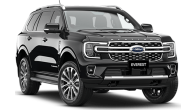


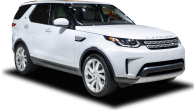






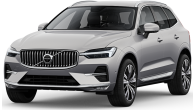




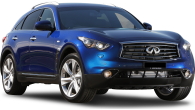

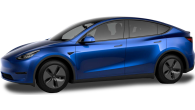









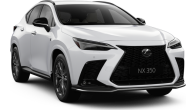
.jpg)
.jpg)
.jpg)

.jpg)
.jpg)
.jpg)
.jpg)


.jpg)
.jpg)
Comments